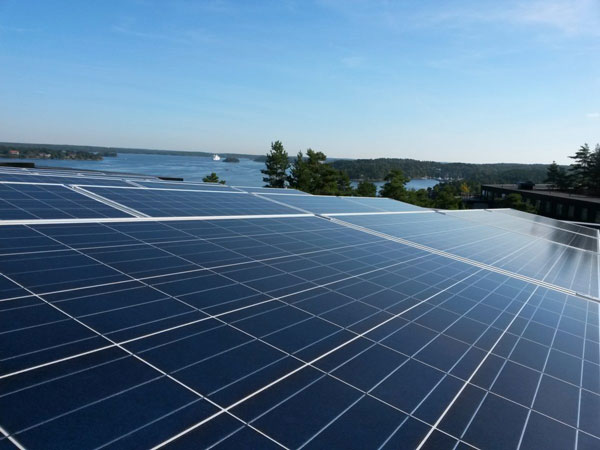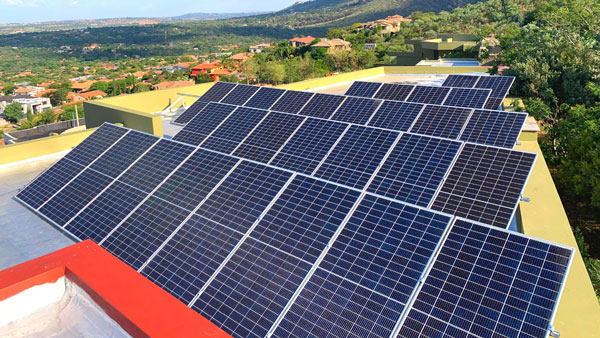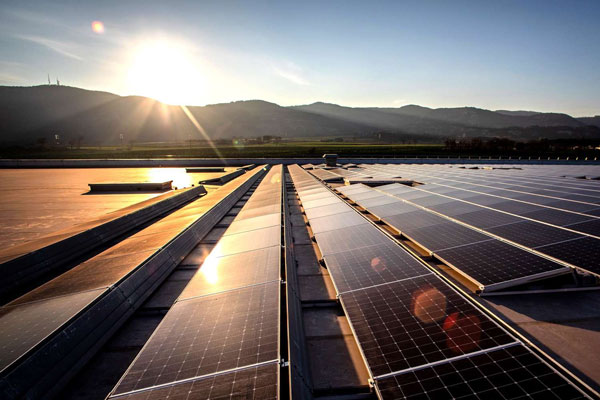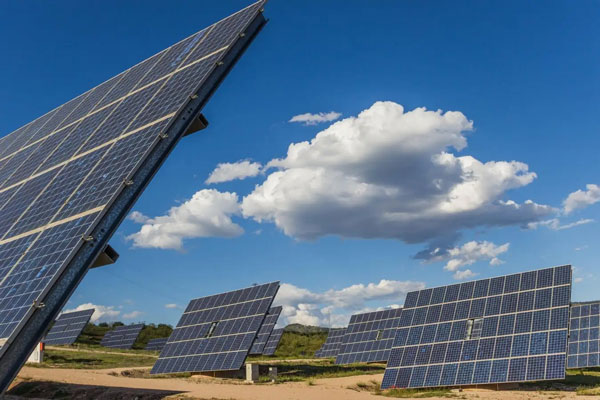Land Use and Environmental Impact
Land use and its environmental impact is a critical issue when it comes to large-scale solar projects. Proper land management means that the project is both sustainable and adheres to environmental legislation while being the least disrupting for the local ecosystem.
The first thing is site selection
A lot of different tropical locations are being considered for large-scale solar projects. The most suitable site for this purpose is the land with the least value for the territory’s agriculture or any land that is already unusable. For instance, in the U.S., some solar farms are built on the land that they have already destroyed through mining. Instead of returning the former mining site into its natural state, companies use the same land for solar projects. This also eliminates the need to destroy another, ecologically more valuable area. The first parameters to consider are the site’s solar irradiance and a close distance to a transmission line. However, the main condition is the least number of “environmental constraints”.
The following factor is an impact assessment, which should include an Environmental Impact Assessment of the project. This procedure considers the solar project’s potential negative effect on the local wildlife population, water sources, and existing vegetation. For example, in the Mojave Desert solar projects, the critical problem is the effect on the local bird population, as many of the existing equipment kills a significant number of birds. The data obtained from these assessments is used while designing the project to make it as least disruptive as possible.
Vegetation Management
Vegetation management is another issue to consider since the land around the solar panels should be in manageable condition. Some plans even utilize sheep grazing around solar panels since this practice is good both for managing vegetation and locals’ economic opportunities. Water usage cannot be ignored while thinking about solar projects, especially in arid regions. Solar panels are quite efficient when they are clean, which in some areas means cleaning them quite often. This can be quite a stress on local water supplies. Some projects use dry-cleaning robotic technology to counter this problem. For example, some Central Valley plantations in California use such technology to use as little water as possible.

Grid Integration Challenges
The process of integration of large-scale solar projects into existing power grids is one that is peculiar and riddled with several complications and unique sets of challenges. These hurdles may include the effective management of the variability associated with solar, ensuring the requisite stability of the grid and the regular and timely updates of grid infrastructure, which may be necessary to process the higher renewable energy inputs.
Variability and Storage
Solar power is naturally intermittent, being dependent upon the availability of the sun for its effective implementation. Several large scale solar projects or installations usually require some form of energy storage, such as the NV’s, Crescent Dunes Solar Energy Project, which uses molten salt collection technology. This feature allows the plant to store enough power for a whole 10.5 hours after sunset, effectively ensuring 24/7 generation for the plant. The constant deployment of solar energy during peak demand periods is not an issue, either.
Grid Stability
The balance between the frequency and voltage within the grid must be maintained in order to sustain the requisite stability of grids. Effective management of both these factors are part and parcel of the process, with advanced inverter systems and other such grid management technology forming the salient point of effective management of this problem. These help manage the production of the plant, by constantly modulating the output of power.
Thanks to the deployment of solar, the electrical input is constantly met. An excellent example of this technology in play can be seen in California, where solar grids, such as these utilize inverter systems at these facilities’. These not only function to change direct current to alternating current, they also contain the ability to sustain the output of real-time data in regards to the voltage of the lines, connections or even substations and adjust power output in accordance to this information. This deployment effectively serves the purpose of direct modulation.
Infrastructure Upgrades
The incorporation of substantial amounts of solar energy will also necessitate upgrades to the existing traditional grid infrastructure. This generally pertains to updates to the transmission lines and other such equipment to ensure the capacity of these grids, sub-stations and lines. A prime example of this can be seen in parts of west Texas, which credit the updates to transmission lines and accompanying structures to their sky-rocketing processing and transmission capacity.
Investment and Funding Sources
One of the crucial steps in developing large-scale solar projects is to secure the investment and find the appropriate sources to fund it. The financial landscape that characterizes the particular type of projects includes both various public grants and private investments, as well as some innovative financial models that make it possible to implement solar energy on a massive scale.
Government Incentives
Various governments in many countries develop incentives that encourage investment in solar energy. These may include tax benefits, feed-in tariffs, and direct imports. In the United States, one can notice a growing tendency in investment in solar energy due to the effects of Investment Tax Credit. According to ITC, the owner gets a tax credit accounting for 26% of the cost of the solar energy system’s installation, thus making the big-scale project more economically effective. The right use of various incentives certainly influences the required initial capital of the project and improves the overall economic outlook of such a project.
Private Sector Financing
The private investors’ role is quite critical in the investment of solar projects. There are many ways on how the involvement of the private sector can be described in both common sources like equity financing and green bonds and innovative models that characterize the funds from the Bloomberg New Energy Finance report. The Topaz Solar Farm in California was financed by the assets provided by the private investors, which amounted to some $1 billion, and the borrowed money of around $1.5 billion. The competitive advantage of the private sector is not just about the required capital but also about the knowledge and extensive experience needed for managing solar projects and scaling them.
Public Private Partnership
Public-Private Partnerships are an increasingly common financial model developed nowadays to make such large-scale solar projects feasible. It is possible potentially to leverage the governmental support together with the efficient work of the private sector. The effective fundraising is possible due to Public-Private Partnerships, and such projects like the Noor Ouarzazate Solar Complex in Morocco involve the Moroccan government and some major international finance groups in the PPP. They help voluntarily share the risk and use the advantages of both the public and private sectors to achieve large-scale renewable energy such as developments.
Policy and Regulatory Compliance
Running a large-scale solar requires proper navigation of policy and regulatory frameworks that define the project’s compliance with national and international standards. Country-specific frameworks can vary substantially depending on the geographical location of the project. At every stage, developers must be versed with the legal aspects of these solar projects.
Local and National Regulations
Each country or region has adopted its set of regulations governing the development of solar energy projects. In Europe, the Renewable Energy Directive imposes ambitious targets on all member states.
While directives are overarching, national legislative frameworks are specific, and outlets list laws that apply to solar projects, including a wide range of environmental impact assessments, building permits, or industrial safety directives. Adherence to these legislations comprising different processes is one of the prerequisites for the successful implementation of a large-scale solar project.
Securing Environmental and Construction Permits
One of the most complex aspects of the solar project launches is the securing of required permits. In most cases, this is a multi-stage process comprised of public consultations and environmental impact assessments that require administration by different types of governmental bodies. An illustrative example would be a large-scale solar project on federal land in the United States is subject to the National Environmental Policy Act of 1970. Its regulations govern the process of assessing the environmental impact of large-scale projects and the consideration of their alternatives. Careful and timely administrative procedures require a good understanding of all requirements and presentation of carefully compiled documentation.
Adjusting to New Policies
Policies on solar energy can and do change in response to technological progress and climate change. To prepare for new policies and their implications for large-scale solar project development, special attention has to be paid to monitoring the changes in current and potential changing frameworks. Changes in the net metering policy can significantly affect plans with regards to maximum allowable generation costs or technology of choice that maximize inefficiency. Developers must be proactively engaged in discussions with policymakers.

Community Engagement
Community engagement is one of the fundamentals of the process of lobbying for large open space installations, particularly solar farms. Not only does this form of activity facilitate better relations between the distributors and the local populace, but also allows to better introduce the project with the help of local volunteers.
Consultations and Communications
At the point of initiating the activities related to the solar project, it is of particular importance to make sure that the first consultations with the local community take place. It is advisable to meet with the local population in order to explain the benefits of the farm, such as jobs and environmental benefits, as well as give some idea of the proposed works. Such meetings, according to the Solar Energy Industries Association, might serve as a good baseline for the entirety of the planned activities, as they serve to inform the population on the issue and to provide an opportunity for the population to express their concerns. Keeping in touch with the communities that participate contains the element of transparency, which contributes to establishing trust between both sides. Keeping the locals in the loop over the entire time of the project is likely to build an ally out of any possible opposition the project is likely to attract.
Usage of Local Workforce
Employment of the local workforce to actually be the people building and administrating the solar farm can significantly improve the appeal of such projects. The increased number of jobs is likely to help the local economy as well as reduce the prospects of violent riots in order to obtain said jobs. In the case of the DeSoto Solar Farm in Florida, the company employed nearly 200 people from the local communities for the work of a six-man building plan. Engaging the workforce of the local population in the project is likely to contribute to the attractiveness of the scheme, as well as contain the opposition.
Environmental and Aesthetic Issues
There is also the issue with environmental and aesthetic arguments against solar energy projects. Prior to presenting the solar farm, it is important to take into account the considerations of both protecting the environment and hiding the ominous look of the solar panels. The consideration of vegetative solutions and choice of the color of the panels can contribute to the better appearance of the project. Otherwise, it might be threatened by larger opposition.
Long-Term Maintenance Plans
Long-term maintenance is one of the key elements in achieving maximum operational efficiency and longevity of service for large solar projects. A variety of detailed strategies must be developed to ensure that the current levels of efficiency remain over the projected lifespan. Such methods include the long-term monitoring and inspection of the current condition of solar panels, inverter systems, and other infrastructure. One of the most important reasons for these practices is the implementation of scheduled maintenance activities to prevent any possible downtime from occurring.
Scheduled Maintenance and Monitoring
The main practice that has to be adopted to ensure that a large solar facility continues to produce energy at optimal conditions is the long-term monitoring and scheduled maintenance. The 550 MW Desert Sunlight Solar Farm, uses a monitoring system that actively oversees the performance of its capacity. The information from the system is used to instruct maintenance crews where to act.
The careful planning of scheduled maintenance as part of a designed long-term monitoring system allows preventive maintenance to address all potential issues early.
Preventive and Corrective Maintenance Strategies
The application of preventive, planned maintenance pioneered by maintenance statistics and approved by manufacturers, as well as a simple reactive, corrective maintenance approach is crucial in achieving success. Highly reliable systems should feature a perfectly balanced combination of both. For example, a large number of solar farms located in Arizona use predictive analytics to anticipate failures in individual components that are likely to happen during the hotter months of the year. This allows greasing to be applied in the cooler periods to provide optimal scheduling.





